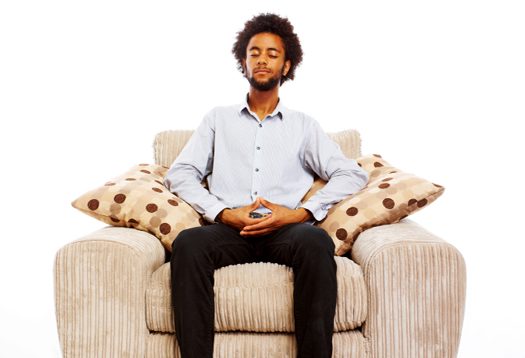When it comes to having a successful meditation session, what we do right before we meditate is just as important for helping us to benefit from the experience as the actual meditation itself.
Enjoying the experience and feeling better after meditation is often the definition of success, but everyone’s expectation will be different.
Tip number one: Setting an intention
Your intention might be very general, such as to feel a sense of well-being mentally and physically or something a little more specific.
For example: The intention of this meditation is to improve my focus or to feel calm or to feel connected to my spirituality.
Starting with an idea of what outcome you really want from the meditation tends to influence your desire to meditate and increases the chances of you actually sitting down to do it.
Tip number two: Doing it in the right place
Some people have a designated place in their home where they meditate, one of my client’s calls it her “Zen Den” and it’s decked out with pillows, candles, fairy lights, incense and fresh orchids. While this may be helpful for enhancing the experience, it’s not a requirement.
You can meditate anywhere: in your parked car, on the bus, at your kitchen table or at your desk in your cubicle at work.
Setting your space up for an uninterrupted meditation is ideal, for example: wearing headphones or earbuds (especially if you’re in public), turning off bright lights and the TV, or turning your chair away from the computer screen, putting the phone on do not disturb, closing the door, or posting an actual sign that says do not disturb.
These are all important steps to ensuring that any place you meditate can become the right place.
Tip number three: Doing it at the right time
Taking care of a few things first will also help.
Make sure your pets have been tended to beforehand, so they don’t come looking for their walk, cuddle time, or food. Or you can put them in another room with their other humans. These proactive steps will at least decrease the risk of interruption from our furry friends.
This can also apply to other members of the family. Make an announcement that you will be unavailable for next 10 minutes and make a swift exit.
The time of day that you meditate is totally up to you. We tend to be creatures of habit, so for some people, every morning is best, for others during their lunch break is ideal. What’s most important is that you actually meditate, so if it’s a different time every day, no worries.
Tip number four: Getting in the right position
Sitting in a comfortable upright position is the general rule of thumb. Lying down is discouraged in meditation, for one, you are more likely to fall asleep, and the other reason is being in an upright position helps to generate a positive flow of energy through the body.
If you are not well, due to injury, illness or disability and it’s not realistic to sit up, then by all means, meditate lying down or in whatever position will work best.
However, if you are able, get into the habit of always sitting upright. This can be in a chair or on the floor or on a cushion while sitting cross legged. If you are in a chair, for best practice, make sure you can place both of your feet flat on the floor.
Tip number five: Background enhancements
Some people have a special playlist of music that they prefer to listen to, there is no right or wrong about the sounds you may choose to play or shut off while you meditate.
It is recommended that if you do listen to music, it is instrumental, because song lyrics can be distracting.
Something that’s rhythmic and easy to relax to, such as a fan, white noise, or recorded sounds of the ocean is a popular choice for meditators.
Others may opt for no sounds at all, reasoning that this keeps things simple, and may help to decrease the chances of becoming dependent on a particular soundscape. This way they will be able to meditate at any time in any place without needing to use technology or a device.
You may want to experiment and practice meditating with these various background options.
Tip number six: Decide how long you intend to meditate
It is common practice to meditate approximately 15 to 20 minutes. At the beginning, you may want to start closer to five minutes. Just like exercise, you want to train yourself and work slowly yet steadily towards doing it longer.
Setting a soft alarm to indicate when time is up is helpful, while others simply note the time on the clock, do the math, and peak at the clock a few times throughout the meditation to track the time.
Once again, there is no right or wrong way for any of these suggested tips. The only way you fail at meditation, is not doing it all.
Trying out different approaches to these simple yet important setups, and deciding what works best for you, will ultimately be the key to your success.
Happy Meditating!

